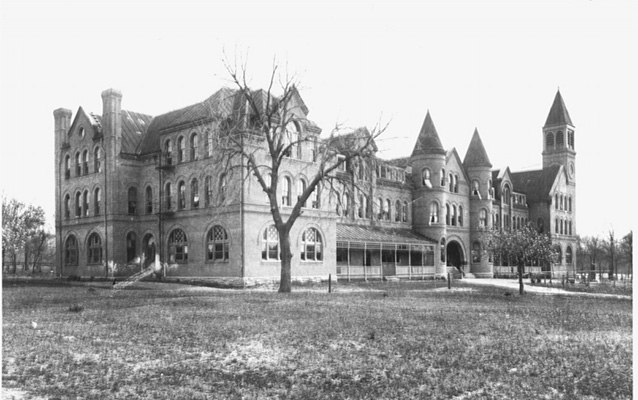Last updated: January 12, 2023
Place
Cherokee Female Seminary, OK

In 1819, Cherokee leaders began holding council meetings at a place called New Town, near current Calhoun, Georgia. Six years later, in 1825, New Town was renamed New Echota, and became the capital of the Cherokee Nation. The Nation had, by this time, developed a police force and a judicial system.
In 1827, the Cherokee Nation drafted a constitution establishing executive, legislative, and judicial branches of government as well as a system of checks and balances. After gold was discovered on Cherokee land claimed by the state of Georgia, the Treaty of New Echota was passed by the US Senate in May of 1836 (despite arguments that the Cherokee who negotiated it did not have the authority of the Nation). From 1838 to 1839, over 16,000 Cherokee were removed from their lands by Federal troops and state militia, and forcibly marched over 800 miles west to Indian Territory in what is now Oklahoma. This is called the Trail of Tears (Nvna Daula Tsvyi: The Trail Where They Cried; and Tlo-va-sa: The Removal in Cherokee).
Talequah in what is now Oklahoma was established as the nineteenth century capital of the Cherokee Nation in 1839.
In alignment with the Cherokee constitution that declared the necessity of schools and education, Principal Chief John Ross proposed in 1846 that the Nation establish two seminaries (or schools): one for boys, and one for girls. The National Council agreed, and both schools opened simultaneously on May 7, 1851.
The Cherokee Female Seminary was originally built three miles south of Tahlequah. It burned down in 1887, and was replaced by the current Female Seminary building that was dedicated in 1889. The Seminary was the largest building ever erected by an Indian tribe. Despite this, when it opened for classes in August of 1890, the school had to turn away many prospective students for lack of space. Now Seminary Hall, the massive, three-story brick affair is roughly L-shaped. Over all it has 127 usable rooms with some 50,500 gross square feet. Two turreted towers flank the main entrance.
In 1907, Indian Territory and Oklahoma Territory became the State of Oklahoma. Two years later, the Cherokee Female Seminary was purchased by the state and opened as Northeastern State Normal School with an enrollment of 511 students. In 1919, the school became Northeastern State Teachers College, a four year institution. In 1939, with an expanded curriculum, it became Northeastern State College. In 1974, graduate-degree programs were added, and the school became Northeastern Oklahoma State University. The name changed again in 1985 to Northeastern State University.
By tracing its lineage to 1846, when the Cherokee National Council authorized the Cherokee Female Seminary, Northeastern State University is:
-
The second oldest public institution of higher learning west of the Mississippi River
-
One of the oldest American institutions to provide a liberal arts education for women
-
The first institution in America to pay equal salaries to men and women professors
-
The first institution of higher education to provide tuition, books, room, board, and supplies free of charge to its students
Cherokee Female Seminary / Seminary Hall was listed on the National Register of Historic Places on April 5, 1973.
Read the full nomination.
Find out more about the National Register of Historic Places.
